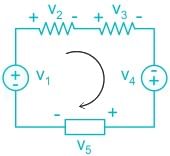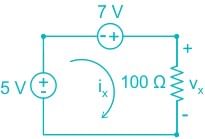Electrical Engineering (EE) Exam > Electrical Engineering (EE) Tests > Test: Kirchhoff’s Laws & Network Solutions - Electrical Engineering (EE) MCQ
Test: Kirchhoff’s Laws & Network Solutions - Electrical Engineering (EE) MCQ
Test Description
15 Questions MCQ Test - Test: Kirchhoff’s Laws & Network Solutions
Test: Kirchhoff’s Laws & Network Solutions for Electrical Engineering (EE) 2025 is part of Electrical Engineering (EE) preparation. The Test: Kirchhoff’s Laws & Network Solutions questions and answers have been prepared
according to the Electrical Engineering (EE) exam syllabus.The Test: Kirchhoff’s Laws & Network Solutions MCQs are made for Electrical Engineering (EE) 2025 Exam.
Find important definitions, questions, notes, meanings, examples, exercises, MCQs and online tests for Test: Kirchhoff’s Laws & Network Solutions below.
Solutions of Test: Kirchhoff’s Laws & Network Solutions questions in English are available as part of our course for Electrical Engineering (EE) & Test: Kirchhoff’s Laws & Network Solutions solutions in
Hindi for Electrical Engineering (EE) course.
Download more important topics, notes, lectures and mock test series for Electrical Engineering (EE) Exam by signing up for free. Attempt Test: Kirchhoff’s Laws & Network Solutions | 15 questions in 10 minutes | Mock test for Electrical Engineering (EE) preparation | Free important questions MCQ to study for Electrical Engineering (EE) Exam | Download free PDF with solutions
Test: Kirchhoff’s Laws & Network Solutions - Question 1
The algebraic sum of voltages around any closed loop circuit is equal to:
Detailed Solution for Test: Kirchhoff’s Laws & Network Solutions - Question 1
Detailed Solution for Test: Kirchhoff’s Laws & Network Solutions - Question 2
Test: Kirchhoff’s Laws & Network Solutions - Question 3
The loop equation for central loop of circuit is:


Detailed Solution for Test: Kirchhoff’s Laws & Network Solutions - Question 3
Test: Kirchhoff’s Laws & Network Solutions - Question 4
The value of unknown voltage source V1 in circuit given below is:

Resistor colors: Red Yellow Brown Gray
Detailed Solution for Test: Kirchhoff’s Laws & Network Solutions - Question 4
Test: Kirchhoff’s Laws & Network Solutions - Question 5
Which of the following expression correctly represents Kirchhop's Voltage Law (KVL) for the given circuit diagram?

Detailed Solution for Test: Kirchhoff’s Laws & Network Solutions - Question 5
Detailed Solution for Test: Kirchhoff’s Laws & Network Solutions - Question 6
Test: Kirchhoff’s Laws & Network Solutions - Question 7
Find the value of V, if the value of I3= 0A.
Detailed Solution for Test: Kirchhoff’s Laws & Network Solutions - Question 7
Test: Kirchhoff’s Laws & Network Solutions - Question 8
Find the value of R if the power in the circuit is 1000W.
Detailed Solution for Test: Kirchhoff’s Laws & Network Solutions - Question 8
Test: Kirchhoff’s Laws & Network Solutions - Question 9
Find the current in the 4 ohm resistor.
Detailed Solution for Test: Kirchhoff’s Laws & Network Solutions - Question 9
Test: Kirchhoff’s Laws & Network Solutions - Question 10
Nodal analysis is generally used to determine_______
Detailed Solution for Test: Kirchhoff’s Laws & Network Solutions - Question 10
Test: Kirchhoff’s Laws & Network Solutions - Question 11
Mesh analysis is generally used to determine_________
Detailed Solution for Test: Kirchhoff’s Laws & Network Solutions - Question 11
Detailed Solution for Test: Kirchhoff’s Laws & Network Solutions - Question 12
Test: Kirchhoff’s Laws & Network Solutions - Question 13
Does the 15A source have any effect on the circuit?
Detailed Solution for Test: Kirchhoff’s Laws & Network Solutions - Question 13
Detailed Solution for Test: Kirchhoff’s Laws & Network Solutions - Question 14
Detailed Solution for Test: Kirchhoff’s Laws & Network Solutions - Question 15
Information about Test: Kirchhoff’s Laws & Network Solutions Page
In this test you can find the Exam questions for Test: Kirchhoff’s Laws & Network Solutions solved & explained in the simplest way possible.
Besides giving Questions and answers for Test: Kirchhoff’s Laws & Network Solutions, EduRev gives you an ample number of Online tests for practice
Download as PDF
























